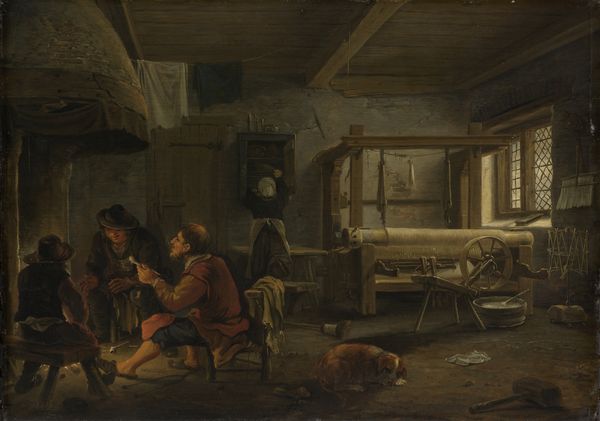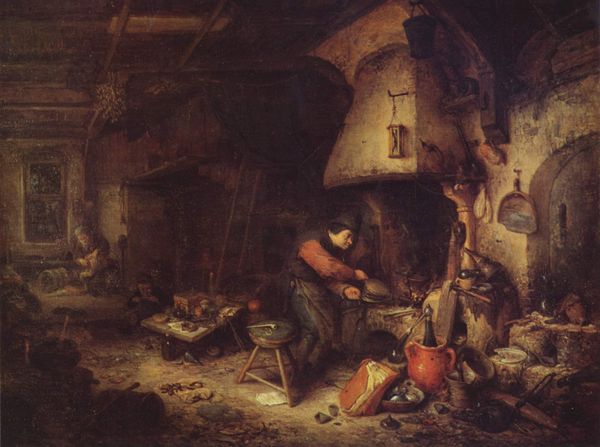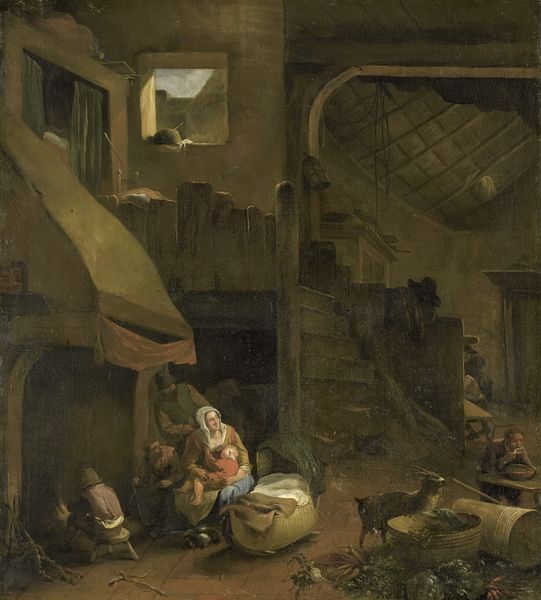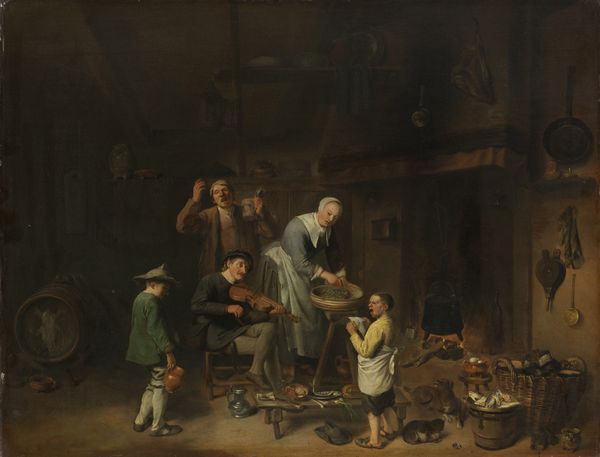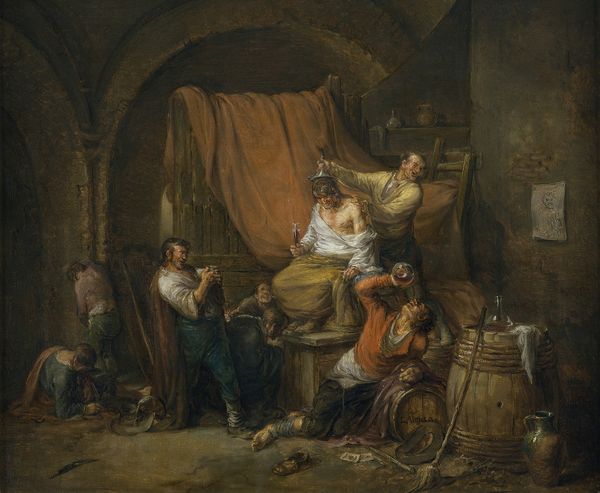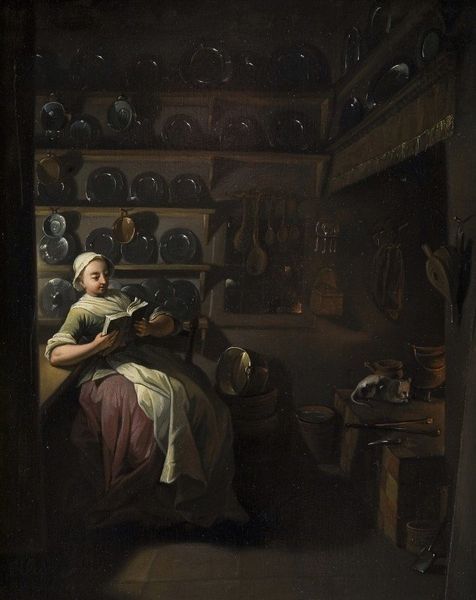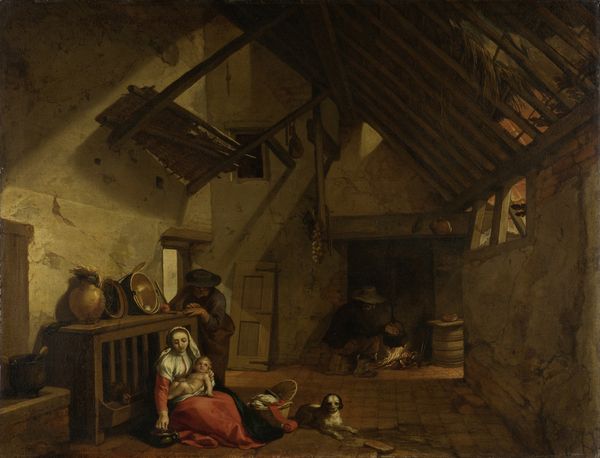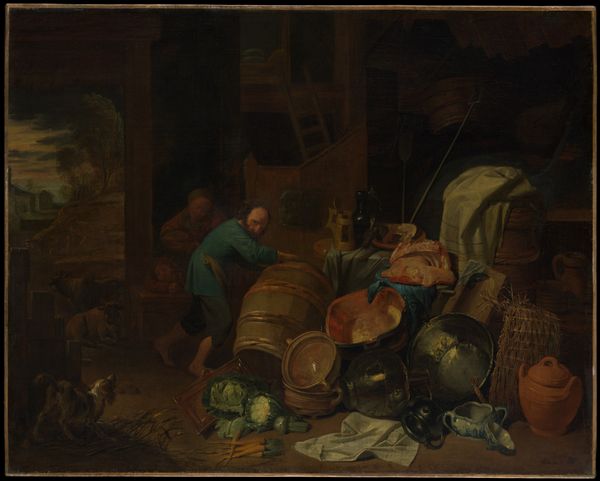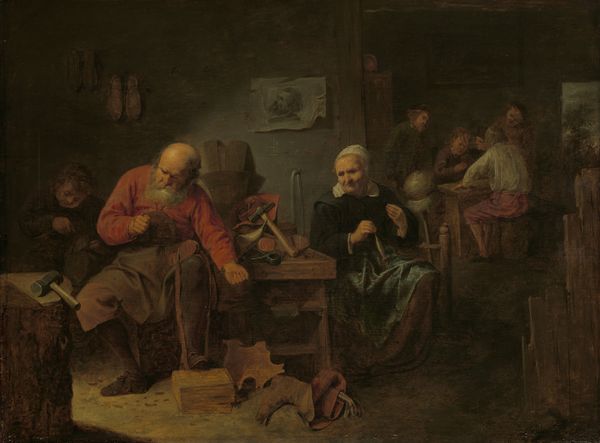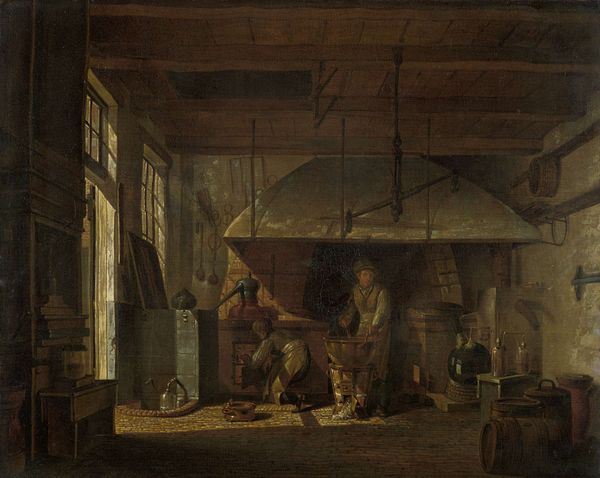
painting, oil-paint
#
portrait
#
dutch-golden-age
#
painting
#
oil-paint
#
genre-painting
Dimensions: height 37 cm, width 35 cm, depth 6 cm
Copyright: Rijks Museum: Open Domain
Editor: We're looking at Thomas Wijck's "Peasant Woman Spinning," painted sometime between 1640 and 1677, using oil paint. I'm immediately struck by the darkness of the scene, and how it contrasts with the light falling on the figures. What strikes you most about this painting? Curator: It's a great observation about the chiaroscuro. What I find particularly fascinating is how Wijck is representing labor and domesticity. During the Dutch Golden Age, there was a rising middle class that increasingly consumed genre paintings like this one. Wijck presents us with a somewhat idealized, yet arguably realistic view of peasant life. What purpose might this image serve for its intended audience? Editor: I guess they wanted to feel like they were getting a glimpse into the 'real' world of the lower classes? Sort of a way to appreciate their own comfortable lives, maybe? Curator: Precisely. This artwork allows the viewer to appreciate, perhaps even romanticize, the laboring class from a distance. Think about how spinning was a key economic activity at the time. Wijck places it squarely within the home, associating the woman with both domesticity and economic productivity. Notice also the details – the child in the cradle, the dog – which reinforces ideas about family and the 'natural' order of things. Do you think there's a sense of social commentary present, or is it pure observation? Editor: It’s hard to tell. The light does focus on the woman and child, as if to dignify them. Maybe Wijck is prompting some empathy in his wealthy viewers, by highlighting the dignity of this 'simple' life? Curator: Perhaps. Or it’s carefully staged in order to uphold existing social structures and norms, making them feel good about their place in the world. The interpretation really depends on how you view the role of art in shaping public perception at the time. Food for thought. Editor: This makes me think a lot more critically about what these domestic scenes were *really* about, and for whom. Thanks for that new angle.
Comments
No comments
Be the first to comment and join the conversation on the ultimate creative platform.
